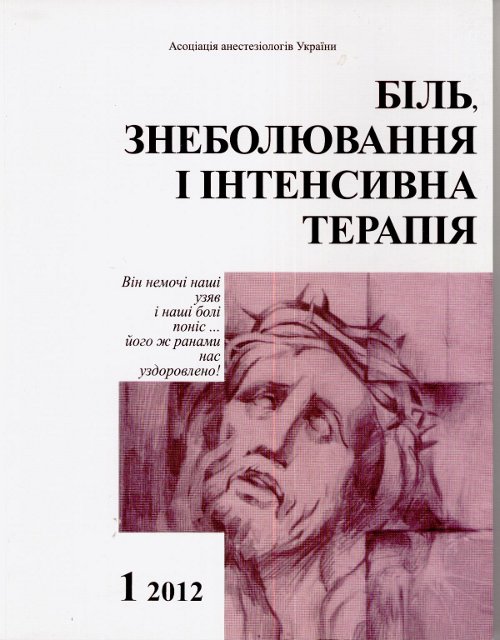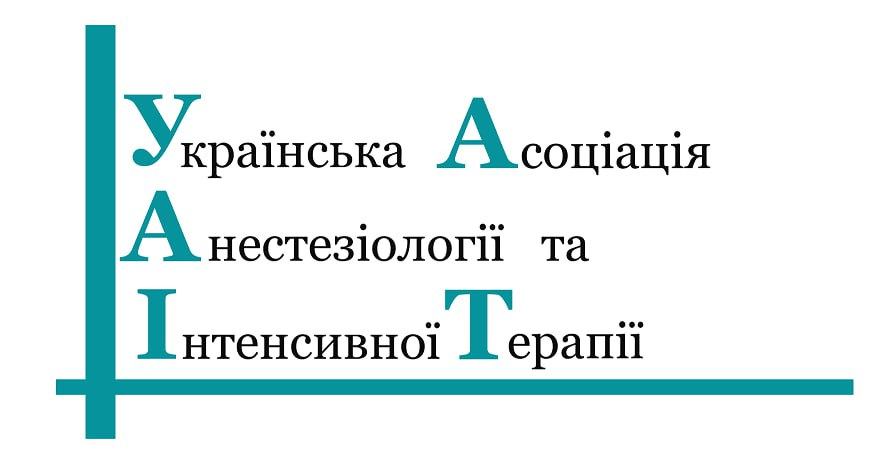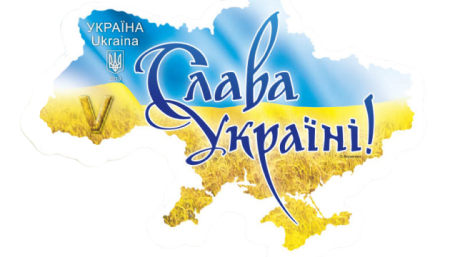Використання парекоксибу натрію для аналгезії не порушує якість сну у хірургічних хворих у відділенні інтенсивної терапії
DOI:
https://doi.org/10.25284/2519-2078.1(58).2012.108335Ключові слова:
сон, мелатонін, сечовина, когнітивна дисфункціяАнотація
Мета дослідження - порівняти вплив на якість сну парекоксибу натрію та омнопону при використанні їх для післяопераційного знеболювання у хірургічних хворих у відділенні інтенсивної терапії.
Матеріали та методи. Дослідження проведено на базі відділення анестезіології та інтенсивної терапії клінічної лікарні швидкої медичної допомоги м. Києва у період з 01.01.2007 р. по 01.01.2008 р. У дослідження було включено 42 хворих, які перебували на лікуванні у відділенні інтенсивної терапії після різних хірургічних втручань. Подвійним сліпим методом хворих рандомізовано на дві групи: для післяопераційного знеболювання в одній групі (п=21) хворі отримували парекоксиб натрію в дозі 40 мг в/м двічі на добу, в іншій (п=21) - омнопон 2% у дозі 1 мл 3-4 рази на добу. Якість сну оцінювали за 5-бальною шкалою, інтенсивність болю - за візуально-аналоговою калою, стан когнітивної функції - за шкалою MMSE. Вміст сечовини та мелатоніну в плазмі крові вивчали загальноприйнятими методами.
Результати. Хворі, які отримували для післяопераційного знеболювання парекоксиб натрію, мали рівень післяопераційного болю, порівнянний з таким у групі омнопону. Якість сну також була порівнянною в обох групах. Рівень MMSE достовірно не відрізнявся у групах. Вміст мелатонину в плазмі крові хворих, які отримували парекоксиб натрію, достовірно був вищим порівняно з групою пацієнтів, яка отримувала омнопон о 24:00 (р=0,0008) та о 04:00 (р=0,0036). Рівень сечовини в плазмі по закінченні 3-ї доби був достовірно нижчим у групі парекоксибу натрію, ніж у групі хворих, які отримували омнопон (р=0,0045).
Висновки. Використання парекоксибу натрію для аналгезії у хірургічних хворих у відділенні інтенсивної терапії не порушувало секрецію мелатоніну, не збільшувало рівень сечовини у плазмі, не впливало на якість сну та не спричиняло порушення когнітивної функції протягом перших 3 діб післяопераційного періоду.
Посилання
Parthasarathy S., Tobin M.J. (2004) Sleep in the intensive care unit. Intensive Care Med, 30:197-206. https://doi.org/10.1007/s00134-003-2030-6
Bourne R.S., Mills G.H. (2004) Sleep deprivation in critically ill patients – pharmacological consideration. Anesthesia, 59: 374-84. https://doi.org/10.1111/j.1365-2044.2004.03664.x
Drouot X., Cabello B., d ’Ortho M.P. (2008) Sleep in the intensive care unit. Sleep Med Rev, 12: 391-403. https://doi.org/10.1016/j.smrv.2007.11.004
Mistraletti G., Carloni E., Cigada M., Zambrelli E. (2008) Sleep and delirium in the intensive care unit. Minerva Anesthesiol, 74: 329- 333.
Kaplan J., Fredrickson P.A., Renaux S.A., et al. (1993) Theophylline effect on sleep in normal subjects. Chest, 103: 193-95. https://doi.org/10.1378/chest.103.1.193
Payen J.F., Chanques G., Mantz J., et al. (2007) Current practices in sedation and analgesia for mechanically ventilated critically ill patients: a prospective multicenter patient-based study. Anesthesiology, 106: 687-695. https://doi.org/10.1097/01.anes.0000264747.09017.da
Jones J., Hoggart B., Whithey J., et al. (1979) What the patients say: a study of reactions to an intensive care unit. Intensive Care Med, 5: 89-92. https://doi.org/10.1007/bf01686054
Hamill-Ruth R.J, Marohn L (1999) Evaluation of pain in the critically ill patient. Crit Care Clin, 15: 35-54. https://doi.org/10.1016/s0749-0704(05)70038-5
Fraser G.L., Riker R.R. (2007) Sedation and analgesia in the critically ill adult. Curr Opin Anaesthesiol, 20: 119-123. https://doi.org/10.1097/aco.0b013e32808255b4
Puntillo K.A. (2001) Patients perceptions and responses to procedural pain: results from Thunder Project II. Am J Crit Care, 10: 238-251.
Scrimshaw N.S., Habicht J.P., Pellet P. et al. (1966) Effects of sleep deprivation and reversal of diurnal activity on protein metabolism of young men. Am J Clin Nutr, 19: 313-319.
Kant G.J., Genser S.G., Thorne D.R., et al. (1984) Effects of 72 hour sleep deprivation on urinary cortisol and indices of metabolism. Sleep, 7(2): 142-146. https://doi.org/10.1093/sleep/7.2.142
Folstein M.F., Folstein S.E., McHugh P.R. (1975) “Mini-mental state”. A practical method for grading the cognitive state of patients for the clinician”. Journal of psychiatric research, 3: 189-198. https://doi.org/10.1016/0022-3956(75)90026-6
Chen Z. (1999) Nuclear factor-κB-like activity increases in murine cerebral cortex after sleep deprivation. Am. J. Physiol, 276: R1812- R1818. https://doi.org/10.1152/ajpregu.1999.276.6.r1812
Opp M. (1989) Corticotropin-releasing factor attenuates interleukin 1-induced sleep and fever in rabbits. Am. J. Physiol, 257: R528-R535. https://doi.org/10.1152/ajpregu.1989.257.3.r528
Taishi P. (1998) Sleep-associated changes in interleukin-1β mRNA in the brain. J. Interferon Cytokine Res, 18: 793-798. https://doi.org/10.1089/jir.1998.18.793
Bredow S. (1997) Diurnal variations of tumor necrosis factor alpha mRNA and alpha-tubulin mRNA in rat brain. Neuroimmunomodulation, 4: 84-90. https://doi.org/10.1159/000097325
Floyd R.A., Krueger J.M. (1997) Diurnal variation of TNFα in the rat brain. Neuroreport, 8: 915-918. https://doi.org/10.1097/00001756-199703030-00020
Nguyen K.T. (1998) Exposure to acute stress induces brain interleukin-1beta protein in the rat. J. Neurosci, 18: 2239-2246.
Krueger J.M., Majde J.A. (1994) Microbial products and cytokines in sleep and fever regulation. Crit. Rev. Immunol, 14: 355-379. https://doi.org/10.1615/critrevimmunol.v14.i3-4.70
Moss R.B. (1999) TNF-alpha and chronic fatigue syndrome. J. Clin. Immunol, 19: 314-316. https://doi.org/10.1023/a:1020595709352
Buvanendran A., Kroin J.S., Tuman K.J., et al. (2005) Cerebrospinal fluid and plasma pharmacokinetics of the cyclooxygenase 2 inhibitor rofecoxib in humans: Single and multiple oral drug administration. Anesth Analg, 100: 1320-4. https://doi.org/10.1213/01.ane.0000150597.94682.85
Watkins L.R., Maier S.F., Goehler L.E. (1995) Immune activation: the role of pro-inflammatory cytokines in inflammation, illness responses and pathological pain states. Fain, 63: 289-302. https://doi.org/10.1016/0304-3959(95)00186-7
Samad T.A., Moore K.A., Sapirstein A., et al. (2001) Interleukin-1β-mediated induction of Cox-2 in the CNS contributes to inflammatory pain hypersensitivity. Nature, 410: 471-5. https://doi.org/10.1038/35068566
Mundigler G., Delle-Karth G., Koreny M. et al. (2002) Impaired circadian rhythm of melatonin secretion in sedated critically ill patients with severe sepsis. Grit Care Med, 30: 536-40. https://doi.org/10.1097/00003246-200203000-00007
Shilo L., Dagan Y., Smorjik Y. (1999) Patients in the intensive care unit suffer from severe lack of sleep associated with loss of normal melatonin secretion pattern. Am. J. Med. Sci, 317: 278-281. https://doi.org/10.1016/s0002-9629(15)40528-2
Miyazaki T., Kuwano H., Kato H., et al. (2003) Correlation between serum melatonin circadian rhythm and intensive care unit psychosis after thoracic esophagectomy. Surgery, 133: 662-668. https://doi.org/10.1067/msy.2003.149
Olofsson K., Ailing C., Lundberg D., Malmros C. (2003) Abolished circadian rhythm of melatonin secretion in sedated and artificially ventilated intensive care patients. Acta Anaesthesiol. Scand, 48: 679-684. https://doi.org/10.1111/j.0001-5172.2004.00401.x
Frisk U., Olsson J., Nylen P., Hahn R.G. (2004) Low melatonin excretion during mechanical ventilation in the intensive care unit. Clin. Sci. (bond), 107: 47-53. https://doi.org/10.1042/cs20030374
##submission.downloads##
Опубліковано
Як цитувати
Номер
Розділ
Ліцензія
Авторське право (c) 2012 І. І. Лісний

Ця робота ліцензується відповідно до Creative Commons Attribution-NonCommercial 4.0 International License.
Автори, які публікуються у цьому журналі, погоджуються з наступними умовами:
a. Автори залишають за собою право на авторство своєї роботи та передають журналу право першої публікації цієї роботи на умовах ліцензії Creative Commons Attribution-NonCommercial 4.0 International License, котра дозволяє іншим особам вільно розповсюджувати опубліковану роботу з обов'язковим посиланням на авторів оригінальної роботи та першу публікацію роботи у цьому журналі.
b. Автори мають право укладати самостійні додаткові угоди щодо неексклюзивного розповсюдження роботи у тому вигляді, в якому вона була опублікована цим журналом (наприклад, розміщувати роботу в електронному сховищі установи або публікувати у складі монографії), за умови збереження посилання на першу публікацію роботи у цьому журналі.
c. Політика журналу дозволяє і заохочує розміщення авторами в мережі Інтернет (наприклад, у сховищах установ або на особистих веб-сайтах) рукопису роботи, як до подання цього рукопису до редакції, так і під час його редакційного опрацювання, оскільки це сприяє виникненню продуктивної наукової дискусії та позитивно позначається на оперативності та динаміці цитування опублікованої роботи (див. The Effect of Open Access).








